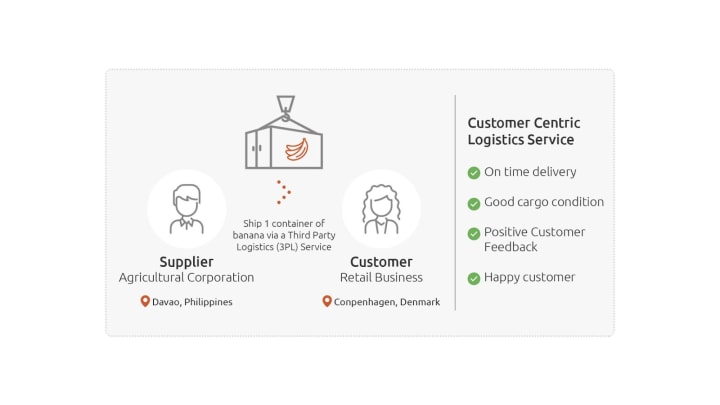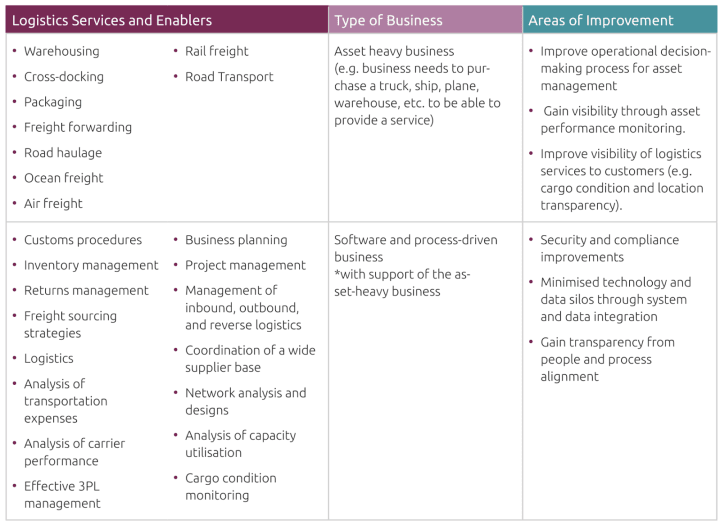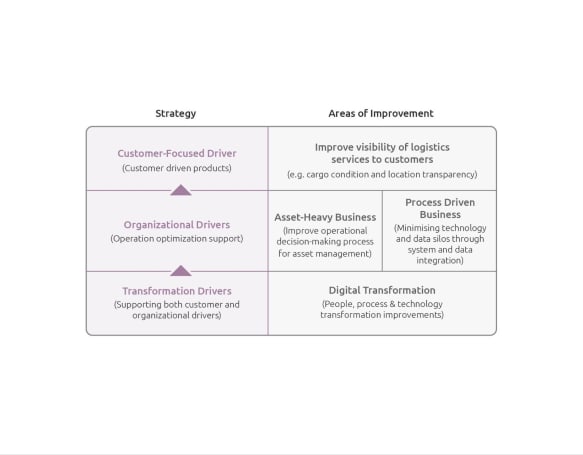Michelle Anne Tabirao
on 21 April 2022
Customer centricity – the digital transformation driver in the logistics sector
It was clear that reality had begun to shift, and that what once would have been horrifying — the outpouring of rage against a backdrop of constant, low-grade mistrust — had become the new normal. This is how the author of the New York Times described the stories of the irate customer behaviour that started showing in the time of pandemic.
This unpleasant phenomenon between customers and service providers has sadly become increasingly apparent, especially in the retail and logistics sectors. Given that there is a rising number of shoppers worldwide due in part to the pandemic, e-commerce has also accelerated, and so have the customer complaints. As a result, customer complaints abound across multiple forums and customer service sites, transport, and logistics providers, and retail shops:
‘Every. Single. Shipment. Late.‘
‘Package Marked as Delivered but not found.’
‘Terrible experience with (Name of Retailer)! Don’t shop for delivery during the pandemic.’
‘Customer refunded in full just two days after purchase. The reason is – damage in transit.’
Customers started sharing this topic in the retailer’s community forum: ‘Guide to Lost Packages‘ to help other customers experiencing the same problem.
What drives this level of dissatisfaction from customers, which has only surfaced in recent years? And why are customers getting so angry?
It boils down to dissatisfaction with the quality of service of the retail and logistics sectors, especially during the pandemic. The number of dissatisfied customers has become more apparent on e-commerce platforms and logistics business’ customer feedback sites when cargo delays and damages occur. This has led to decreased customer satisfaction, anger, and an increased number of returns.
How would this customer behaviour affect the way organisations do business in the logistics sector?
For e-commerce, retailers, manufacturers, and supplier businesses, a successful sale to customers means that the purchase arrives at the customer’s address on time and in good condition. Any delay of goods can mean losing a customer. A study conducted by Voxware states that 69% of customers will most likely not repeat shop with a supplier when a purchased item is delayed by two days of expected delivery date. Poor cargo conditions can also contribute to decreased customer loyalty to a retailer and logistics provider. These factors can impact customer retention and cause reputation damage due to negative reviews — both online and via word of mouth. It is also not financially viable to replace lost customers with new ones. The cost of acquisition for new customers is 5 to 25 times the cost of retaining loyal customers according to Harvard Business Review. Effective customer retention is always sound business practice.
Organisations and business owners have to make sure that they work with a trusted logistics provider so that their customers’ expectations are met. The logistics services are responsible for planning and controlling the most efficient and effective way to store and transport the goods. The logistics business has to make sure that the cargo arrives on time and in good condition.
Logistics sectors play a vital role in fulfilling the end consumer/shopper needs of their customers, the retailers. And to be able to do that, this sector will need to rethink its ways of working, of processing, and its workflows. Innovation and transformation will need to take place as quickly as possible in order to retain market share. However, the logistics sector has multiple challenges to overcome before it can innovate. One of the challenges has been the ongoing COVID-19 pandemic. Another challenge is creating a competitive logistics landscape that solves the sector’s most pressing concerns.
This blog gives an overview of the logistics sector’s business landscape to understand further the areas of improvements in processes, technologies, and people.
Logistics industry landscape
The logistics industry is one of the backbones of international trade. The industry size is huge; in fact, the logistics market is worth €5.275 trillion in 2020. For the years 2020-2024, the Compound Annual Growth Rate (CAGR) of logistics is expected to grow by 4.7%. Logistics services are part of the value chain linking the manufacturers/suppliers to the consumer, this also includes the transportation of goods from supplier to warehouses, ports, and order fulfilment. A study from the University of South Australia also describes logistics as customer-oriented operation management.
The main role of the logistics business is to offer best-in-class operational management, and so this sector recognises the importance of the customer-centric approach. Looking at different logistics businesses’ mission statements, customer-centricity is the main focus of most players. Here are some consolidated highlights of a number of companies’ mission statements:
- Creating a positive and reliable experience for clients with professionalism on the logistics solution
- Serving the logistics needs of the customers with excellence and value
- To create an environment of trust and accountability for the customers and the company’s employees
- Going above and beyond to meet customers’ needs
Being customer-centric means having customers at the centre of organisational decision making and focusing on creating ways to deliver a positive customer experience. It also entails having a customer-first culture by prioritising understanding of the customer’s goals. Further, it means being able to understand the economics of customers and understand the costs and benefits of delivering the best customer experience. Lastly, being able to focus on high-quality execution, with a high level of trust and engagement with customers. Figure 1 below shows some factors that make customers happy, which are also considered as success factors of logistics services. The image also describes a scenario where a supplier has hired a logistics company to manage the logistics of a product shipment to a customer’s retail business based in Europe.

Areas of improvements in logistics
Before the logistics business can cater to its customers’ needs, the industry needs to understand the current challenges to make its business operations work at the optimised level. Table 1 below illustrates the same scope and identifies the areas of improvement to operating these enablers. One example is road transport providers, usually trucking companies, generally categorised as asset-heavy businesses. The reason is that the main assets of these companies are their trucks and containers. The types of equipment are needed to transport goods from one place to another. Therefore, these companies need to ensure that trucks and cargo containers are operating and in good condition. Scheduled maintenance and condition-based actions to predict the likelihood of future failures is essential because they can reduce unplanned downtime and risk, reduce maintenance cost and improve asset utilisation.
The logistics sector has multiple areas of improvement that can be broadly categorised into two business types – the heavy asset-heavy business and the software and process-driven business.
Table 1: Areas of improvements in logistics business services and enablers

Digital transformation in logistics
Table 1 from the previous section describes some of the areas of improvement in the logistics sector slowing transformation to a customer-centric organisation. Addressing these will be essential to players’ long-term success within the sector. Figure 2 below presents a strategy to address three major concerns: customer centricity, organisational challenges, and digital transformation. The strategies are categorised into three parts: transformation driver, organisational driver, and lastly, customer-focused driver.
There are, of course, multiple strategies that can solve different aspects of the challenges faced within logistics. Here, we present an approach that leverages technology to drive organisational change and accelerate the digitisation of logistics processes. This suggested approach satisfies the dual necessities of digital organisational transformation and increased customer-centricity.

To be able to drive customer-focused service delivery, a company needs to first optimise its operations. This means making sure that improvements are made for both asset-heavy and process-driven aspects of the business. When the company addresses its organisational challenges, the logistics provider can fully leverage the creation of customer-driven products to address the problem of service transparency and visibility to its customers.
Summary
As with organisations in many other industries, logistics services are under intense pressure to remain competitive to face severe market disruption and demands. Focusing on customer excellence is one of the keys to understanding market competitiveness. Therefore, organisations should create strategies on digital transformation focused on customer-centricity.
How to strategise your digital transformation in your organisation?
Read our whitepaper entitled: Seeking satisfaction: Customer-centric digital transformation in logistics. It is a guide on making your customers happy using open source technologies and digital transformation for logistics leaders.
In this whitepaper, we tell logistics leaders and practitioners a compelling story of customer centricity as the core component of logistics business strategy. In addition, we give further insights to:
- Both lenses of the complexity and simplicity of the logistics landscape
- Areas of improvement in the logistics sector
- How digital transformation can help address the logistics sectors needs
- Positioning open source technology as one of the digital transformation drivers
- Open source solutions in the fields of AI, ML, cloud computing, cybersecurity, IoT, and robotics



